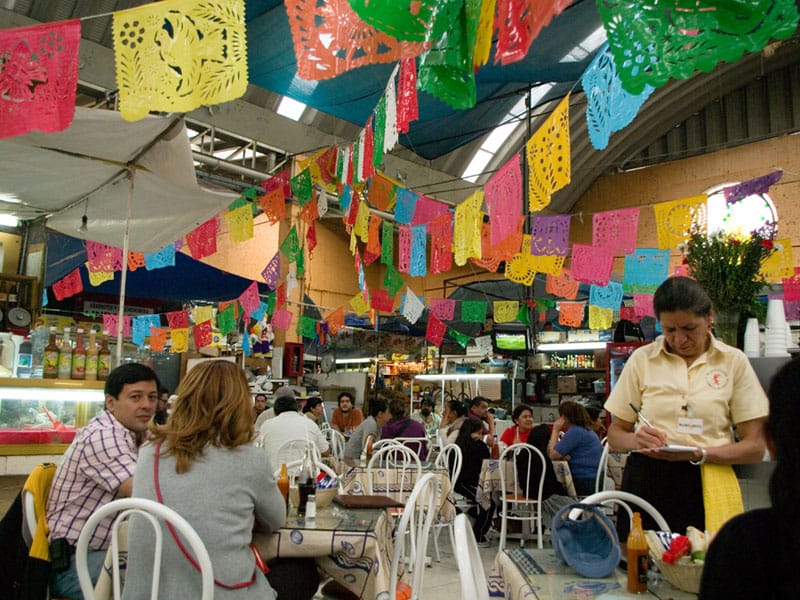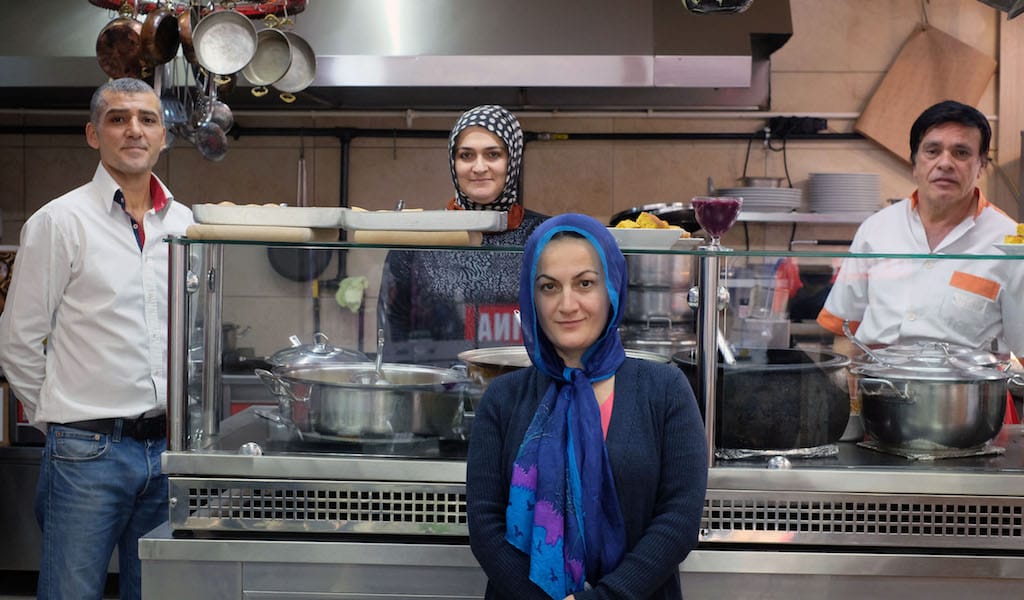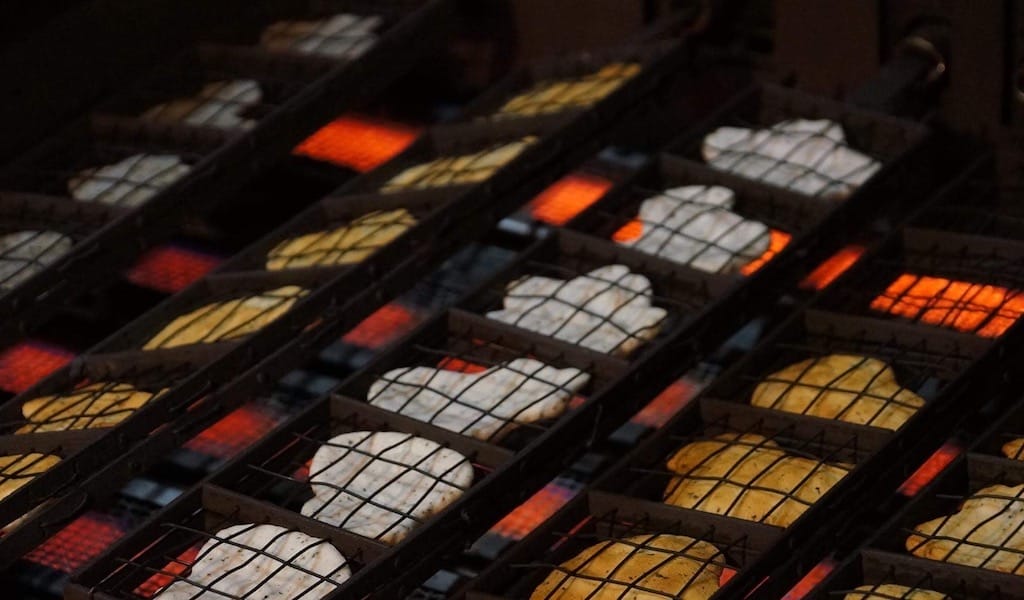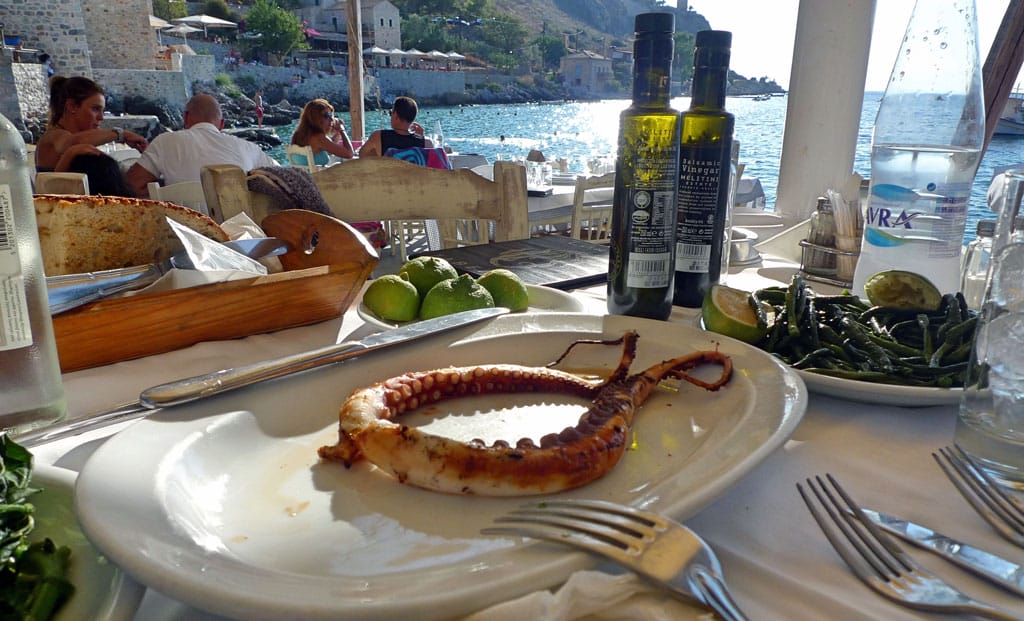Mexico City can be quite lacking when it comes to finding fresh, tasty seafood. At most markets in the city, in addition to the taco places and tlacoyo vendors, there is usually some kind of stand selling seafood, but the quality can be either very good or very bad. Buying from the right place is thus essential, and that’s why we were so happy to discover La Morenita, a standout seafood and oyster restaurant in Colonia Roma’s Mercado Medellín.
Established more than three decades ago by Miguel Gardono, La Morenita has become a busy, reliable stop for shoppers. Miguel worked at a seafood restaurant as a kid growing up in Toluca, just west of the Distrito Federal in Mexico state, so when he moved to Mexico City, he brought with him that experience and knowledge and opened a seafood place of his own. We learned all of this not from Miguel himself, who was busy shucking oysters, but from our charming waitress, Margarita Hernandez, who herself has been serving up fish platters at La Morenita for 19 years.
Situated beneath the towering central portion of the market building, the venue – which goes by both the names Marisquería La Morenita and Ostionería La Morenita (marisquería is a seller of seafood; ostionería, a seller of oysters specifically) – is quite large for a market restaurant. The décor gives the impression of an ongoing beach party, and encourages customers to kick back and enjoy themselves. A raised kitchen area brackets the rear of an expansive dining space with a few dozen tables adorned with blue and white tablecloths with a seashell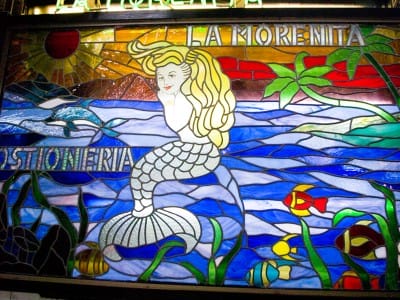 pattern, while brightly colored banners flutter above diners’ heads. Lining a wall opposite the kitchen is an elaborate stained-glass panel depicting a fair-haired mermaid in the ocean.
pattern, while brightly colored banners flutter above diners’ heads. Lining a wall opposite the kitchen is an elaborate stained-glass panel depicting a fair-haired mermaid in the ocean.
The menu at La Morenita is made up entirely of seafood dishes – another departure from most eateries at the market, which tend to offer standards like quesadillas or chicken, even if they also serve seafood. We ordered the mojarra, a white fish similar to tilapia that Margarita revealed was the eatery’s most popular dish. We quickly understood why. The large, tasty fish, paired with rice and lime wedges, arrived whole and generously covered with a thick sauce made of ground chili and garlic, which added a mildly spicy bite. We next tried the filete almendrado, a white fish fillet also smothered in a thick sauce, this one made of ground almonds and manchego cheese. Like the mojarra, it was served with rice, but unlike the mojarra, this fish came deboned and was therefore a bit easier to eat. The flavor of the fish was almost overshadowed by the sauce, which had a smooth, lightly nutty taste, but the plate ultimately ended up being passed around the table for everyone to taste.
Another very popular dish at La Morenita is the ostiones a la diabla, or “devil oysters.” These smallish oysters are cooked in butter and, as the name indicates, served with a hot sauce made out of a variety of red chilies that will make you sweat. We also tried the pulpo al ajillo, cooked octopus in garlic and 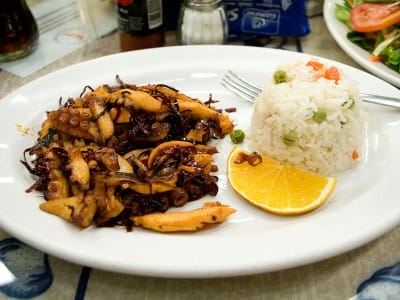 chili sauce, which was a highlight. Served with fried strips of pasilla chilies that gave it a bit of crunchiness and heat, the octopus was cooked to perfection, tender rather than chewy. But our favorite dish was the pescado empapelado (“fish in paper”), cooked in a foil plate covered with foil paper. Before we had even tasted the fish, we were entranced by the otherworldly aroma that wafted out as we pulled off the foil. Inside was the day’s catch on a plate: two large fish fillets, along with clams, octopus and shrimp, cooked in a buttery tomato sauce that felt delightfully smooth in our mouths. This is the dish that has kept us repeatedly coming back to La Morenita.
chili sauce, which was a highlight. Served with fried strips of pasilla chilies that gave it a bit of crunchiness and heat, the octopus was cooked to perfection, tender rather than chewy. But our favorite dish was the pescado empapelado (“fish in paper”), cooked in a foil plate covered with foil paper. Before we had even tasted the fish, we were entranced by the otherworldly aroma that wafted out as we pulled off the foil. Inside was the day’s catch on a plate: two large fish fillets, along with clams, octopus and shrimp, cooked in a buttery tomato sauce that felt delightfully smooth in our mouths. This is the dish that has kept us repeatedly coming back to La Morenita.
Although the restaurant stocks sodas and a selection of beers, we washed down our food with fresh fruit drinks sold by the next-door jugería (juice stand), where you can get all kinds of juices made from fresh fruits and vegetables.
Señor Gardono, La Morenita’s owner, buys fresh seafood for the restaurant every day from the trucks that arrive at La Nueva Viga, the largest seafood market in the city, from the Pacific and the Gulf of Mexico. Mexico City may be stuck in the middle of a landlocked plateau, but La Morenita certainly makes it deliciously easy to forget that fact.
 November 27, 2017 Emice’nin Yeri
November 27, 2017 Emice’nin Yeri
Everyone seems to feel at ease in Emice’nin Yeri. It’s the kind of place where workers […] Posted in Istanbul October 2, 2019 As the Senbei Turns
October 2, 2019 As the Senbei Turns
Making senbei (Japanese rice crackers) from scratch is a very labor intensive process, […] Posted in Tokyo November 2, 2016 CB on the Road
November 2, 2016 CB on the Road
Some of the most unique and dramatic scenery in Greece can be found in Mani, a dry, wild […] Posted in Athens
Published on March 13, 2013
Related stories
November 27, 2017
Istanbul | By Zamira Skalkottas
IstanbulEveryone seems to feel at ease in Emice’nin Yeri. It’s the kind of place where workers come after their shifts, families and couples dine, single men drink their tea and watch football matches on the TV, and women too are comfortable eating alone. But it’s not just a welcoming place – Emice’nin Yeri also happens…
October 2, 2019
TokyoMaking senbei (Japanese rice crackers) from scratch is a very labor intensive process, as we learn on our Tokyo walk, but the end result is worth it – when we open a pack of these homemade crackers, we end up eating them all!
November 2, 2016
AthensSome of the most unique and dramatic scenery in Greece can be found in Mani, a dry, wild region in the south-central part of the Peloponnesian peninsula. Bookended by the Messinian Gulf to the west and the Laconian Gulf to the east, the area is a unique combination of stone, sun, sea and mountains. Here,…







































